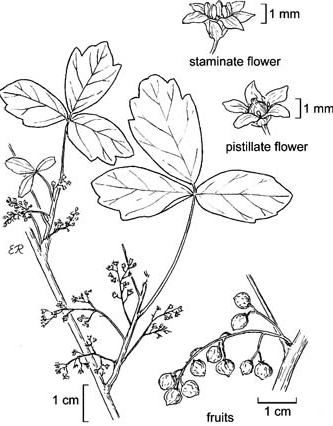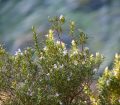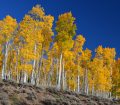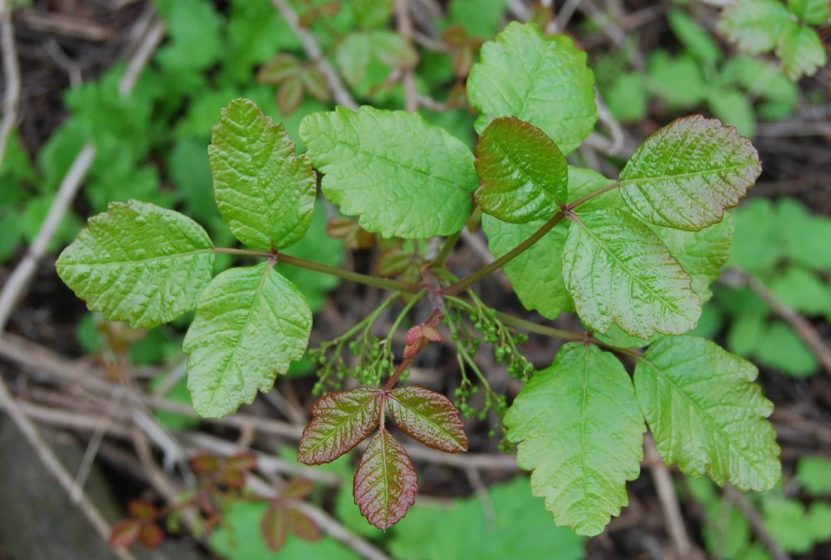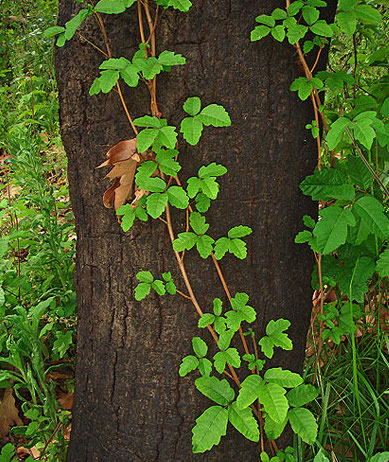“Leaves of three, leave it be…”, is a commonly recited rhyme to warn campers and hikers of the genus of perennial flowering plants in the sumac family, commonly known as “Poison Oak”, and in particular on the West Coast of the United States, known as Pacific Poison Oak or Western Poison Oak.
"Leaves of three, let it be"
This woody shrub is known by its scientific name as “Toxicodendron diversilobum” and can be found widely across Western North America from Baja, through California, the Pacific North-West, and up into British Columbia.
The distinguishing group of three leaves ranging in colors from green, red, yellow and combinations there of, are cause for caution as this plant produces a surface oil, urushiol, which can cause a mild to severe allergic skin reaction in 4/5ths of the human population.
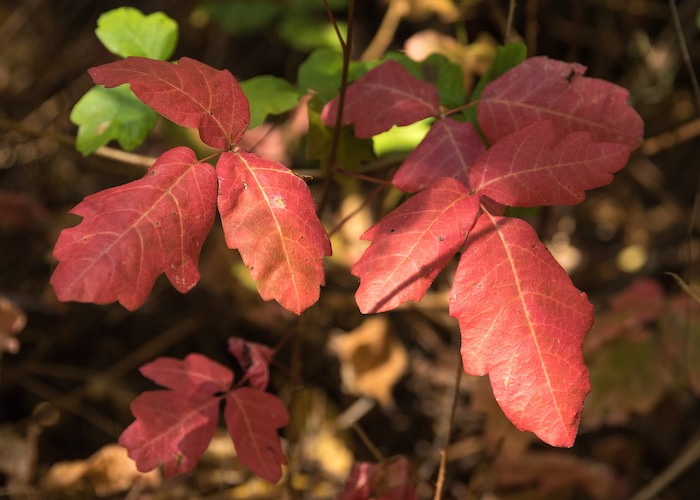
Western Poison Oak leaves are green for the summer and go back to yellow or scarlet red before dropping in the fall.
Unlike the California ground squirrel, western gray squirrel, mule deer, black tail deer, and other indigenous fauna who all can come in regular contact with poison oak and actually happily eat the leaves without a negative reaction. This pesky plant (to humans anyways) can be the cause of severe discomfort in humans when our skin comes in contact with the oil resulting in itching and then turning into dermatitis with bumps, blistering, inflammation and severe itching. Ugh….
Keep a trip to the outdoors poison oak contact free if you can. Avoidance is the best prevention when entering an area with poison oak. Know how to identify this plant and do not come in contact with it. Don’t eat the leaves, rub it on your face, wipe your butt with them, or use its sticks to roast marshmallows or a hot dog.
The smoke from burning poison oak volatilizes the oils and is extremely hazardous, even to those 20% of humans who may have thought they were immune. Also keep your pets from poison oak as while they might not have an allergic reaction, the plants oils on their fur may transfer to human skin through contact.
Uh oh…so, you could have sworn you saw a snipe and took off after it through the brush in hot pursuit with your camera. The snipe has eluded you and now you’ve realized that you just had a romp through poison oak:
• If in a campsite with amenities, take a shower with soap as quickly as you can, within 5 to 15 minutes of contact. If you see a rash developing, its too late.
• If your camp supplies includes rubbing alcohol, try soaking an uncontaminated cloth, bandana, or extra t-shirt, and washing off any areas of contact.
• Or, if you were really pro-active, you might have avoided getting poison oak by having used a “blocker”. Trying googling “poison oak or poison ivy blocker” for various over the counter commercial products containing bentoquatam that when used as directed can be an effective barrier to urushiol.
Drat…too late, you’re developing an itch and the poison oak has taken hold. There are a number of remedies to combat the itch and rash:
• Use the classic pink topical Calamine lotion. This stuff helps soothe and cool the itch, and dries the blisters in most moderate cases.
• Try using a solution of about half a cup of white vinegar and a pint of water. Use a washcloth or gauze to apply this solution to the rash. Seems to work best when the solution is used cool.
• Use a whole milk cool compress on affected areas. The more fat in the milk, the better its effect. Rinse the milk off with warm water after applying.
• If you are by the ocean, go for a safe dip in the sea water. The salt water will help wash and dry out the sores. Please be aware stinging jelly fish, thrashing great white sharks, or rip tides, all of which will probably ruin your day more so than the poison oak.
• If treating your rash from the comfort of your home you can try taking a bath using an over the counter colloidal oatmeal product from such brands as Aveeno.
• In addition to “blockers”, there are pre and post poison oak rash over the counter products such as Tecnu wash. This product can be used proactively to prevent urushiol from affecting your skin and also used as a wash after a rash develops to help remove any free oil and aid in the natural healing process.
• Another over the counter treatment is 1% hydrocortisone cream.
• If your poison oak rash is severe and none of these home or over the counter remedies seem to be helping your condition, please see your local physician.
While many Native Americans found beneficial uses for poison oak from weaving baskets to snake bite treatments and more, most of modern humans are not educated or trained in this bush craft and see poison oak as a nuisance.
Don’t ruin your outdoor outing by rolling around in poison oak. Know what to look for for, identify it, and avoid it. Be prepared and have some handy remedies in your outdoor kit to treat poison oak if you do end up with an itch and rash from coming in contact with the oils. Remember this handy rhyme, “leaves of three, leave it be” and may your next adventure outdoors remain poison oak itch and rash free.
